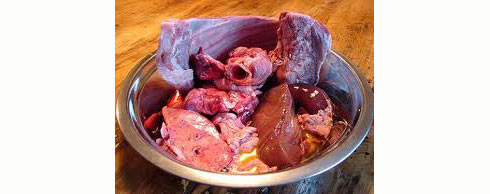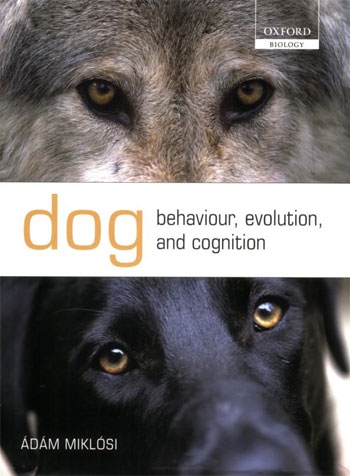Huxley’s gait, Sunday, November 11, 2012 – Three Months of White Crane Formula Hip Guard – Herbal Supplement Treatment
December 5, 2012
Our beloved senior dog, a 10-year-old chocolate Labrador named Huxley, has hip dysplasia, compressed discs and arthritis. He gets one quarter of a Tramadol tablet a day, an evidence-based medicine approach to pain management via opiates.
Beginning in August we gave Huxley a Traditional Chinese Medicine herbal supplement, White Crane Formula Hip Guard from Natural Solutions, Inc., Speonk, NY for a total of 800 capsules.

In order to minimize my own (or anyone else’s) bias, I thought we’d shoot comparable videos at the start of our three month experiment and at the end. Now here they are, the most recent in November first, and below that our August baseline.
What do you see? Improvement, no improvement? Better stability? Scroll down below the videos for our personal conclusion. . .
Our judgement living with him on a daily basis is that there has been no improvement.
The same assist that he needed to get up the short set of stairs at the side of our house prior to three months of White Crane Hip Formula is still required. If anything, he seems to have a slightly harder time now rising from a sitting or laying down position.
We were told that some people saw dramatic improvement in two months time so we extended our trial for an additional month just to be sure we were not short-changing Huxley.
White Crane Hip Formula was not expensive, especially compared to evidence-based medicines, and it may have thousands of years of Chinese Traditional Medicine behind it, but it was simply not effective in our case.
I’d love to be proved wrong about herbal supplements – all I really care about is Huxley’s health and mobility. I do feel that we gave this one a fair trial. . . that ended with negative results.
For those who suggest that a treatment that has been around for ages must be of some benefit (this is a logical fallacy known as the Argument from Antiquity) I recommend they go to a dentist who exclusively uses the dental practices of two thousand years ago. Any takers?
Zombie Walk/Pub Crawl – October 26, 2012 for the Stratford Dog Park
October 27, 2012
Zombie Walk • October 26, 2012 • Various Establishments around Town
Yesterday, the Stratford Dog Park Action Committee held a Pub Crawl/Zombie Walk that began with participants getting their zombie on with a scarifying make-up session at Miami Sun Factory, then lurching off to McCoy’s Pub, followed by Acapulco’s, Blue Point Bar and Grill, Stephen’s Pub & Grill, Sienna Italian Trattoria, Vazzy’s of Stratford and finishing up at The Sitting Duck in Paradise Green.
Thank you to all the participating venues and our fabulous sponsors: Diageo Brands, Goody Bassett’s Ice Cream, The Natural Dog Groomer, Miami Sun Factory and the Senft Family for making our first Zombie Walk such a success!
A grand and gruesome time was had by all with the proceeds of the evening going to help fund the creation of an off-leash dog park in town. Your intrepid reporter risked life and limb to get these exclusive photos of the Zombie Horde in action.
Click on any image to start slide show. Click on [View with PicLens] to view images full screen.
Huxley’s Gait – August 7, 2012 – Backyard to Side Door before Pubescent Angelica Root
August 9, 2012
Our chocolate Lab Huxley turned 10 years old this past June. With the recently revised canine-to-human age conversion chart factoring his weight (96 lbs. down from 110), Huxley is the equivalent of a 78-year-old man.
For the past two years hip dysplasia, a traditional disease of senior Labs, and arthritis have begun to affect him. It’s one of the prices we pay for purebred dogs; a closed genetic pool allows harmful recessive genes to come to the fore.
The above video is, I think, a good representation of his current mobility. You’ll note his wobbling gait, his sitting down after taking a few steps and his inability to go up a short flight of stairs unaided.
We have always supplemented his premium kibble with fat-free yogurt, omega oils, vegetables, fruit and, in season, antihistamines.
For several months he’s also been receiving 50 mg of Novox (carprofen) a non-steroidal anti-inflammatory and 1/4 tablet of Tramadol hydrochloride, a narcotic-like pain reliever. We moved to this after 18 months of canine aspirin to manage his pain. He appears to no longer be in pain, or perhaps we have merely reached the threshold of his stoicism.
We no longer give Huxley glucosamine-chondroitin. Why? It doesn’t work, at least not in pill form.
My wife has two artificial hips. So we have some background in dealing with hip dysplasia, osteoarthritis and related conditions. She regularly took glucosamine-chondroitin supplements for more than a decade. Her condition never improved, only grew worse and she ended up replacing both hips.
Here are some links that I think are useful in determining whether glucosamine-chondroitin is effective (below). Given this information, I’m always surprised that when challenged, MDs and DVMs almost always fall back on, “Well, it can’t hurt.” That’s not enough, in my opinion. It’s also not free, in addition to being useless. No doctor who claimed belief in this supplement has offered to pay for it out of his own pocket for us.
http://www.sciencebasedmedicine.org/index.php/glucosamine-the-unsinkable-rubber-duck/
http://www.sciencebasedmedicine.org/index.php/glucosamine-update-a-new-study-and-a-new-product/
http://www.quackwatch.org/01QuackeryRelatedTopics/DSH/glucosamine.html
This is leading.
So why am I trying White Crane Hip Formula? I’ve been told it works by people whose opinion I trust and whose intelligence I respect. I realize that this is only anecdotal evidence and, as I always say, the plural of anecdotes is not data.
But I will not allow my skepticism to preclude a treatment that might help my beloved senior dog. If I have to admit that this herbal supplement works, I’ll be happy to do so. More than that, I am hoping that I see the kind of results others report. Even though right on the label it states, “This product is not intended to diagnose, treat or prevent any disease.” That’s a pretty big disclaimer, no?
Also, I challenge the average dog owner to determine if this treatment is unsuitable because their pooch might be sensitive to dragon’s blood (the bark or resin of Croton lechleri, a flowering plant native to South America).
I want to try and eliminate my own bias. If White Crane Formula Hip Guard works, it should work whether I ‘believe’ in it or not. So I’ll be posting additional videos as Huxley takes his first full month of White Crane Formula Hip Guard. I’ll ask you to look at these videos and judge for yourself Huxley’s improvement (or lack thereof).
The following information (below) is on the White Crane Formula Hip Guard label. I’ve never seen any medication with so many ‘active ingredients.’ But I am fond of white peonies. So there’s that.
__________________________________________________________________________________
Active ingredients: frankincense, myrrh, corydalis tuber, tangerine, curcuma root, pubescent angelica root, cinammon bark, drynaria, teasel root, morinda, eucommia bark, ox knee root teasel, lycopedium, eupolyphaga, dragon’s blood, atractylodes lancea, white peony, jujube fruit, clematis, astragalus, white atractylodes, aconite, angelica radix.
Inactive ingredients: Contains no fillers, colors or additives.
Cautions: Do not use in animals sensitive to any of the ingredients.
Directions: Give 1 capsule per 10-20 lbs twice daily.
Statements not evaluated by the FDA. This product is not intended to diagnose, treat or prevent any disease. For use in animals only. Sold through veterinarians only. Natural Solutions, Inc. makes no warranty, express or implied, for its products. In no event shall Natural Solutions, Inc. be liable for any indirect, special or consequential damages, and the limit of liability shall be the price paid for the product herein.
Three-Year Old Diabetic Girl Has Life-Saving 15-Week Old Dog
May 27, 2012
An adorable three year-old in Gloucester, England has a 15-week old pal who may save her life. Olivia Hamilton is diabetic and needs constant monitoring. Her cocker spaniel Bonnie has been scent-trained to alert the family when Olivia’s blood sugar is low by barking and running around. Bonnie’s done this eight times already.
Click on the image above or go here to ITV News’ Rebecca Broxton’s report The dog that is proving a lifesaver to a little girl with diabetes to read the complete story and watch a very sweet video of this beautiful blonde child, her puppy and her mother.
Of course, there’s nothing not to love in this story. Especially the fact that at three Olivia is unaware of how exactly special and important her new puppy is. A new puppy in the house should always be the center of a young child’s world, how could it be otherwise? It gives me a lot of pleasure imagining how much deeper Olivia’s relationship to Bonnie will be when she fully understands what Bonnie is doing on her behalf.
But what amazes me is that this cocker spaniel could learn this skill so well, so reliably at just 15 weeks! Could this be some sort of World’s Record for youngest dog to reach this level of proficiency? Does anyone out there know of a similar case, involving a puppy? Color me impressed!
When our first Lab was just under three months old we were congratulating ourselves for successfully house training him. A reliable response to Sit, Stay, Come and Settle Down was a work in progress at that point.
And this amazing cocker spaniel puppy has been trained to detect minute changes in Olivia’s breath and body odor and alert when they go into the Danger Zone. Bonnie also types 60 WPM, speaks French, Dutch and Farsi, drives stick shift, is competitive in mixed martial arts and is having her first novel, Rawhide Chews & Belly Rubs published this fall by Little, Brown and Company.
Raw Food Diet for Dogs: “What is natural isn’t necessarily safe or better.”
May 25, 2012
In a month where a major dog food is taking place because of salmonella contamination it may seem odd to bash feeding your dog yourself, from food that you purchase solely or that purpose. You are your own quality control inspector, monitor all ingredients and make small batches of food right in your own kitchen, instead of in some food processing factory thousands of miles away. Seems like a lot of positives strung together there. Hold on though, the truth, as usual, is more complex.

Yes, a home-prepared diet may be fine, even beneficial, if you buy quality ingredients and follow tested and approved recipes – like the ones designed by nutritionists at the American College of Veterinary Nutrition that are “complete and balanced” to ensure your dog gets everything she needs. The caveat here is that this diet should be cooked, and not raw. The reason for this is the same as it is for humans: to avoid bacterial contamination.
Ask how many of the enthusiasts feeding a raw food diet to their dog, also consume one themselves? After all, if the concept of being natural and eating like their wolf ancestors is great for dogs, why don’t we take a leaf from Paleolithic Man and do the same? This would mean eating only raw vegetables, fruits, nuts, roots and occasionally some fish and meat. No bread, no sugar, no cereals, no potatoes, no milk. It sure would change the consumption at your next Super Bowl blow-out.
This week The New York Times has an article (The Raw Food Diet for Pets) where a pretty, red-headed actress is profiled proclaiming the virtues of a raw food diet for her two Siberian huskies. She spends $250 a month feeding her dogs. That’s 8 dollars and change a day, compared to a super-premium commercial dry dog food at about 2 dollars a say.
You should always take medical and veterinary advice from unqualified, attractive actresses.
Look how well that’s worked out for Playboy’s silicon-inflated Jenny McCarthy and her anti-vaccine crusade: 95,341 preventable diseases and 888 deaths from June 23, 2007 to May 5, 2012. See The Jenny McCarthy Body Count.
And, as she states, her qualification is that she went to the “University of Google.” So much cheaper and easier than getting an actual degree from an accredited institution. I wonder if she uses a dentist who, instead of dental school, went to the University of Google, too.
[ Ladies, I apologize if I offended any of you who have chosen to surgically augment your figures by marking the fact that Ms. McCarthy’s charms are not all natural. Make your breasts the size of pontoons, for all I care. It’s not her cup-size I have an argument with, it’s her willful ignorance. ]
I commend Anahad O’Connor for including some balance in this article from Louise Murray, vice president of the A.S.P.C.A.’s Bergh Memorial Animal Hospital in New York City and the author of “Vet Confidential: An Insider’s Guide to Protecting Your Pet’s Health:
“Animals in nature eat raw food but don’t live very long. They tend to have parasites and succumb to infections and things like that. What is natural isn’t necessarily safe or better.”
A 2006 study showed that among commercially available raw pet foods 7% contained salmonella and 56% contained E.coli bacteria. So are the companies selling raw foods really better than the dry kibble manufacturers?
One of the benefits you hear frequently from raw food enthusiasts is a shinier coat. What they don’t realize is that this results from the higher fat content of the diet, not any nutritional supremacy. Homemade raw diets often lack enough calcium and phosphorus in forms that can easily be absorbed by your dog.
Lisa M. Freeman, DVM, PhD, a nutrition professor at the Cummings School of Veterinary Medicine at Tufts University published a report in the Journal of the American Veterinary Association in 2001. Her evaluation looked at five raw diets, three homemade and two commercially available. All were found to have “nutritional deficiencies or excesses that could cause serious health problems when given long term.”
Now I don’t know if Dr. Freeman is as pretty as the red-headed California actress or has breasts as prominent and as perky as Jenny McCarthy. But I respect her brains and the quality of her research. And when you want answers about your dog’s nutrition, that’s what really counts.
[ Dr. Freeman, no insult to your charms is intended. I’m sure you’re the hottest nutritional professor in the whole Cummings School. ]
Oh, and as far the other positive points claimed for the raw diet – repeat after me – the plural of anecdotes is not data. The Plural of Anecdotes is not Data. The PLURAL of ANECDOTES is not DATA. Thank you.
Dogs Yawning – Behavior that Crosses the Species Barrier
May 23, 2012

Zuberoa Marcos writing in the journal Science explains a recent study that hints at the empathy that may exist between dogs and humans, Dogs Feel Your Pain. Very few animals yawn and only dogs yawn in response (contagiously) to human yawns, crossing the species barrier. Now it’s been found that dogs will yawn when they simply hear the sound of someone they know yawning, so visual cues are not the sole trigger for this behavior.
Dogs do look us in the eye, unlike every other species on the planet and they look to us for behavioral cues as well. Why does your dog seem to know so much about you? One reason is this gaze, they are constantly studying us and gauging our emotional state. Dogs will also look to their human when faced with a problem they can’t solve on their own.
There’s nothing a scientist can tell a dog owner to dissuade her from believing that what she experiences from her dog is not true empathy and understanding. But we should consider the caution offered by Ádám Miklósi, an ethologist at the Eötvös Loránd University in Budapest who explains, “Using behaviors as indicators will only show some similarity in behavior, but it will never tell us whether canine empathy, whatever this is, matches human empathy.
“Dogs can simulate very well different forms of social interest that could mislead people to think they are controlled by the same mental processes, but they may not always understand the complexity of human behavior.”
URGENT! Dog Food Recall – Diamond Pet Food – Salmonella Warning
May 4, 2012
Friday, May 4, 2012 – 9:00 pm
We’ve just received word of a dog food recall from our local Costco Distributer. Diamond Pet Foods are recalling all Kirkland Signature Dry Food with the following production codes:

If your production code has a 2 or 3 in the 9th or 10th position AND an “X” in the 11th position, your product is affected by the recall. If the product you have does not include a 2 or 3 in the 9th or 10th position AND an “X” in the 11th position, your product is not affected by the recall, and you can continue to feed it as usual.
Please pass this information on to anyone you think may have recently purchased dry dog food.
Other affected brands include
- Chicken Soup for the Pet Lover’s Soul
- Country Value
- Diamond
- Diamond Naturals
- Premium Edge
- Professional
- 4Health
- Taste of the Wild
Dogs Watch Humans for Clues and Help, Wolves Don’t
May 3, 2012
Recent studies are showing what has long been claimed: canines are the only animals that not only meet our gaze, but they actively seek us out when confronted with problems.
Even so-called domesticated wolves, raised by humans, don’t seek us out as social partners for interaction. For the details on this research, see this article in Scientific American by Jason G. Goldman, “Dogs, But Not Wolves, Use Humans As Tools.”
One of the authors of this study, Adam Miklósi has also written an excellent book for the Oxford Biology series, Dog Behaviour, Evolution, and Cognition which I highly recommend. Be forewarned that this is a detailed, technical review of the most recent canine research. It’s not a light read but is well worth the effort if you want to gain deep insight into how your dog thinks and behaves.
This one is not for the casual reader or fan of say, the unthinking sentimentality of Marley & Me or the under-educated and sometimes dangerous methods of Cesar Milan.
In my opinion Marley was not the ‘world’s worst dog,’ John Grogan was simply an inept owner with a knack for spinning colorful anecdotes. Mr. Milan’s methods are more likely to get you bitten and do little or nothing to ‘improve’ your dog. He’s a personality that plays a dog trainer on TV, just like Hugh Laurie plays Dr. House.
Both Grogan and Milan have perfected a formula for making a mint but that’s really about marketing, not canine research or expertise. My opinion: your view might be opposite.
“Paying the Price of Having a Fat Pet” by Anahad O’Conner
April 26, 2012
It’s been known for some time that the human obesity epidemic in America has drifted, naturally, on down to our companion animals. What’s the harm? Anahad O’Conner lays it all out for you in “Paying the Price of Having a Fat Pet” in The New York Times.

“The problem in pets mirrors that in overweight humans, often stemming from lack of exercise and too many snacks and calorie-dense foods – or, in this case, treats and table scraps – between meals. For veterinarians, broaching the subject of an overweight cat or dog with owners can be a delicate task. Some respond defensively or see it as a reflection of their lack of exercise and struggles with the scale. Bringing it up with an owner requires just as much finesse as pointing out someone’s own weight gain.”
DogTV in the New York Times
April 26, 2012
I wrote about DogTV previously. Now The New York Times weighs in, “Should Your Dog Be Watching TV?” by Douglas Quenqua. I believe the takeaway should be this quote from Dr. Ann E. Hohenhaus, staff veterinarian for the Animal Medical Center in Manhattan:
“I think a lot of this is to make us feel better as opposed to making the pet happier. Your pet needs adequate exercise and an interesting environment. You cannot just put on the TV and hope your dog is going to get better.”
Thank you, Dr. Hohenhaus for your intelligent assessment. We agree.
































